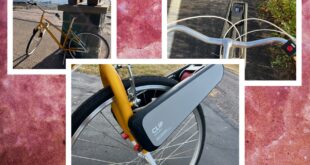But no story can be all good news. Auto industry officials argue that meeting that 2029 target will be really very hard. “That’s practically impossible with available technology,” John Bozzella, the president and CEO of the auto industry lobbying group the Alliance for Automotive Innovation, wrote earlier this year in a letter to Congress. The government estimated that installing more advanced AEB systems on its cars would cost an additional $350 per vehicle. The auto lobbying group estimates prices could range up to $4,200 per car instead, and it has filed a petition to request changes to the final federal rules.
In response to WIRED’s questions, a spokesperson for NHTSA said that more advanced AEB systems “will significantly reduce injury or property damage and the associated costs from these crashes.” The spokesperson said the agency “is working expeditiously” to reply to the group’s petition.
Auto safety experts say that if automakers (and the suppliers who build their technology) pull off more advanced automatic emergency braking, they’ll have to walk a tightrope: developing tech that avoids crashes without ballooning costs. They’ll also have to avoid false positives or “phantom braking,” which incorrectly identify nonhazards as hazards and throw on the brakes for no apparent reason. These can frustrate and annoy drivers—and at higher speeds, give them serious cases of whiplash.
“That is a really big concern: That as you increase the number of situations in which the system has to operate, you have more of these false warnings,” says David Kidd, a senior research scientist at the Insurance Institute for Highway Safety (IIHS), an insurance-industry-funded scientific and educational organization.
Otherwise, drivers will get mad. “The mainstream manufacturers have to be a little careful because they don’t want to create customer dissatisfaction by making the system too twitchy,” says Brannon, at AAA. Tesla drivers, for example, have proven very tolerant of “beta testing” and quirks. Your average driver, maybe less so.
Based on its own research, IIHS has pushed automakers to install AEB systems able to operate at faster speeds on their cars. Kidd says IIHS research suggests there have been no systemic, industry-wide issues with safety and automatic emergency braking. Fewer and fewer drivers seem to be turning off their AEB systems out of annoyance. (The new rules make it so drivers can’t turn them off.) But US regulators have investigated a handful of automakers, including General Motors and Honda, for automatic emergency braking issues that have reportedly injured more than 100 people, though automakers have reportedly fixed the issue.
New Complexities
Getting cars to fast break at even higher speeds will require a series of tech advances, experts say. AEB works by bringing in data from sensors. That information is then turned over to automakers’ custom-tuned classification systems, which are trained to recognize certain situations and road users—that’s a stopped car in the middle of the road up ahead or there’s a person walking across the road up there—and intervene.
So to get AEB to work in higher-speed situations, the tech will have to “see” further down the road. Most of today’s new cars come loaded up with sensors, including cameras and radar, which can collect vital data. But the auto industry trade group argues that the Feds have underestimated the amount of new hardware—including, possibly, more expensive lidar units—that will have to be added to cars.
Source link
 meganwoolsey Home
meganwoolsey Home



